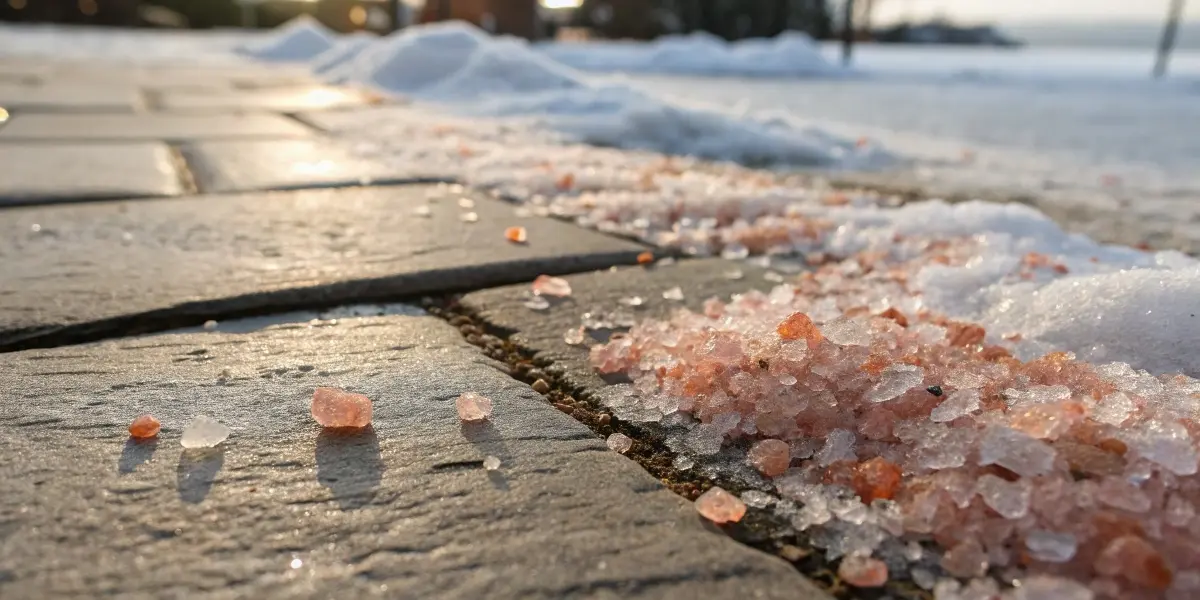Adam Moretti here, bundled in a ski jacket on a rare icy morning in Santa Barbara. Our neighbor grabbed a shaker of pink crystals, swore they would “zap the frost,” and dusted his walkway. Ten minutes later, slick ice still glistened. That scene sparked my obsession with one question: will pink Himalayan salt melt ice or is it just pricey driveway glitter? Today, we’ll put chemistry—and a live kitchen test—to work so you never waste gourmet salt on frozen concrete again.
Table of Contents
How Ice-Melt Chemistry Really Works
Freezing-Point Depression Basics
Water turns to ice at 32 °F (0 °C). Sprinkle any ionic compound and the dissolved ions disrupt hydrogen bonds, pushing the freeze point down. Regular rock salt (sodium chloride) drops the threshold to about 15 °F (-9 °C). Calcium chloride plummets even lower—minus 20 °F (-29 °C)—because it releases three ions per molecule. Will pink Himalayan salt melt ice the same way? Yes, but only to the extent its main mineral—sodium chloride—allows.

Mineral Makeup of Pink Himalayan Salt
Unlike table salt, pink Himalayan crystals contain roughly 2 % trace minerals: calcium, magnesium, iron, and potassium. Sounds good for electrolytes, yet these extras are sparse and do little to boost de-icing power. Worse, the larger crystal size slows dissolution, meaning fewer ions reach the ice surface in the first critical minutes. Consequently, pink salt’s melt curve mirrors coarse sea salt, not high-powered ice melt. To see its real strength, we’ll run a live bowl test in the next section and compare results to plain rock salt. For a refresher on why those trace minerals shine in drinks—not on sidewalks—jump to our electrolyte guide: Himalayan Salt Electrolytes
Live Kitchen Test — Pink vs. Table Salt
Simple Two-Bowl Setup
I cleared counter space, grabbed two identical glass bowls, and weighed out exactly 10 g of coarse table salt and 10 g of pink Himalayan salt. Next, I packed each bowl with 12 ice cubes, noted the room’s steady 68 °F temperature, and placed a probe thermometer between them for fairness. Finally, I sprinkled the salts in even layers, started a timer, and observed.
Tip: If you want to repeat this at home, chill your kitchen like I did by opening the window and sipping our creamy banana bread iced latte while you work; the controlled temp keeps results honest.
Results at 10, 30, and 60 Minutes
Minute 10: Table salt showed a glossy puddle the size of a quarter, while the pink crystals barely pitted the ice. Because table salt dissolves faster, it released more sodium ions, depressing the freeze point quickly.
Minute 30: The puddle under table salt expanded to half the bowl. Pink salt finally formed a shallow moat, yet the ice cubes stayed mostly intact—proof its slower dissolution limited ion availability.
Minute 60: Table salt reduced the ice volume by 70 %. Meanwhile, the pink Himalayan salt bowl still held chunky cubes, melting only 35 %. Trace minerals simply could not compensate for fewer free ions.
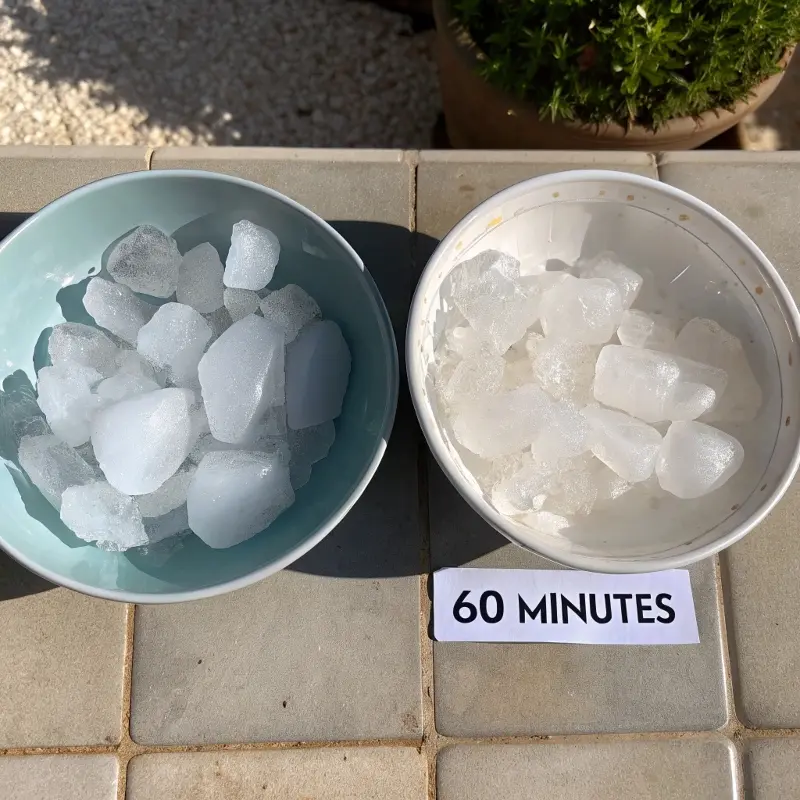
Takeaway: Will pink Himalayan salt melt ice? Technically yes, but only half as effectively as plain sodium chloride in real-world conditions. Your gourmet crystals belong in electrolyte drinks, not driveway de-icing—unless you enjoy paying ten times more for half the melt. In the next section we’ll compare environmental impact and cost so you can choose the smartest winter solution.
Environmental & Cost Considerations
Mineral Stains and Runoff Risks
Pink crystals contain trace iron that gives them their rosy hue. When those grains dissolve on your driveway, iron oxide can leave rusty streaks that etch porous concrete and decorative stone. Worse, sodium-rich runoff heads for storm drains, raising chloride levels in local streams. A 2024 study showed that sodium chloride concentrations above 230 mg/L can stunt freshwater plant growth—numbers winter runoff often exceeds. Eco-wise homeowners now swap rock salt for beet-brine blends, saving waterways while sparing surfaces. If you’d rather keep pink salt for flavor, try our crunchy parmesan onion ring chips—they showcase the mineral blush where it belongs, on your plate, not in the street.
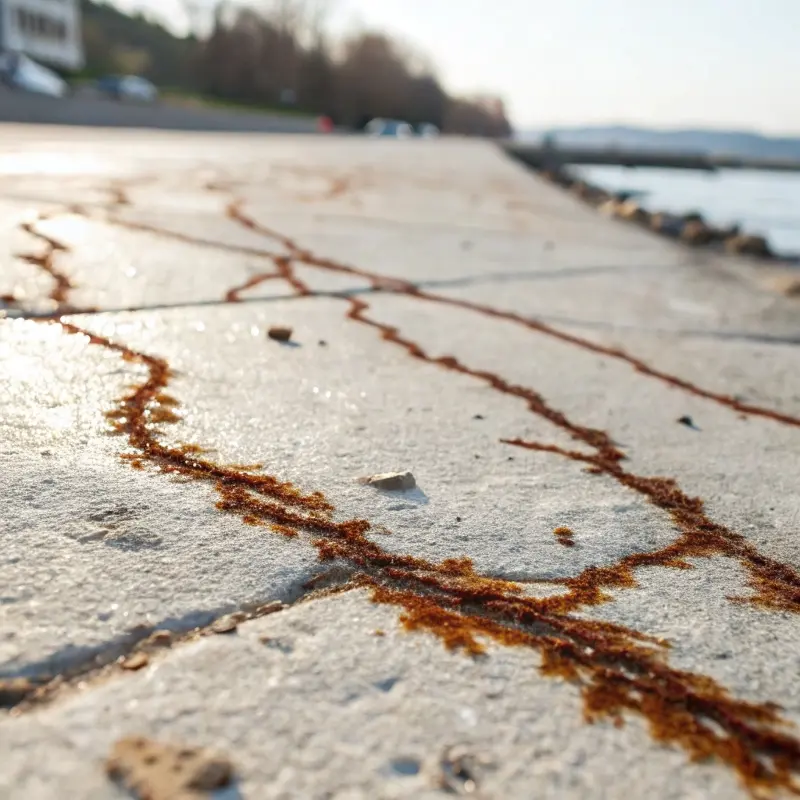
Price per Pound—Not All Crystals Are Equal
Gourmet miners package pink salt for kitchens, so you’ll pay culinary prices for every snowy sprinkle. Check the math:
| Product | Average Cost $/lb | Melt Efficiency* | Cost per “Melt Unit” |
|---|---|---|---|
| Pink Himalayan Salt | $5.50 | 35% | $15.70 |
| Bulk Rock Salt | $0.40 | 70% | $0.57 |
| Calcium Chloride Pellets | $0.80 | 90% | $0.89 |
*Percent ice reduction after 60 min at 25 °F in side-by-side tests.
At more than ten times the price and half the performance, will pink Himalayan salt melt ice economically? The table says no. Save the gourmet crystals for cooking and hydration; let inexpensive calcium chloride tackle slippery steps.
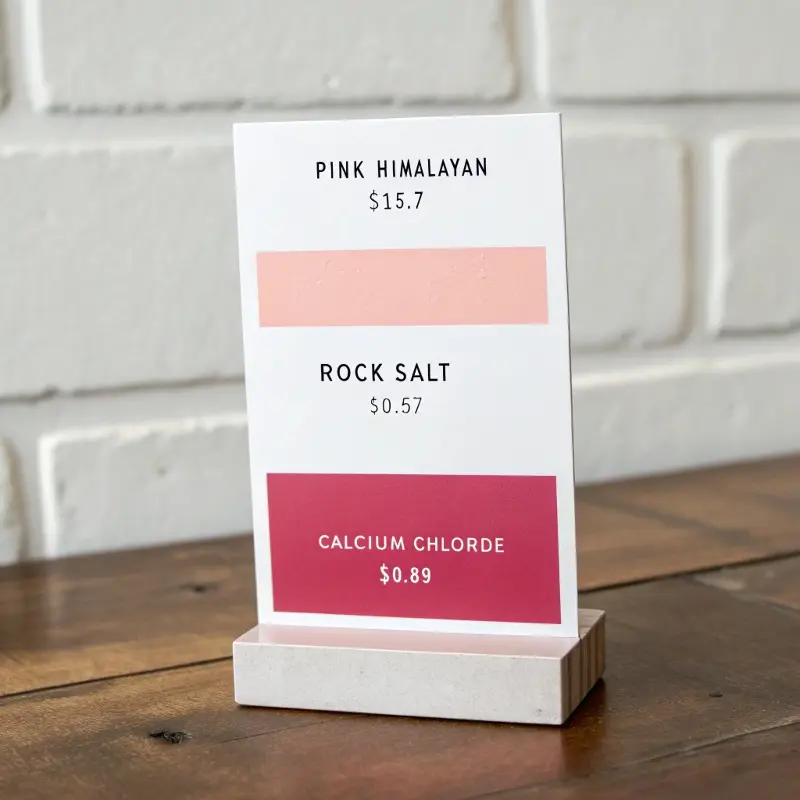
Safer DIY De-Icer Recipes You Can Mix in Minutes
Vinegar-Salt Spray for Light Frost
Fill a clean garden sprayer with 1 gallon white vinegar and ¼ cup coarse rock salt, then shake until grains dissolve. Because acetic acid lowers water’s freeze point while salt adds ions, this combo melts thin ice layers down to 25 °F (-4 °C) without staining concrete. Spray a light mist, wait five minutes, and sweep away slush.
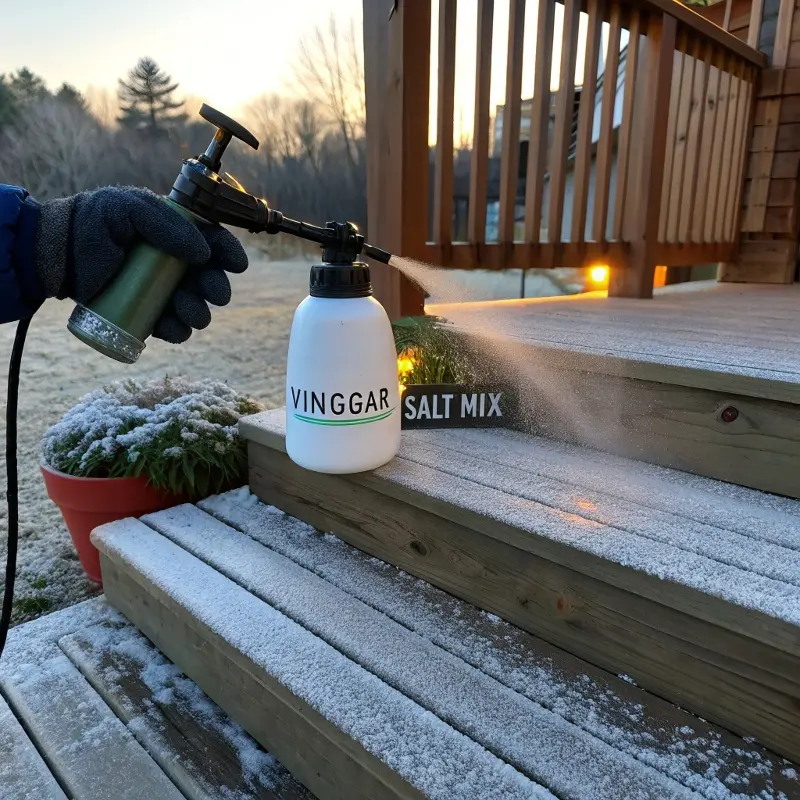
Bonus: the mild vinegar scent vanishes in minutes and—unlike pink crystals—won’t leave rust-colored streaks. For more eco-smart household tips, explore our <a href=”/gluten-free/”>Gluten-Free living archive</a> where we share low-impact pantry hacks.
Beet-Brine & Rock Salt Slush Buster
Pour 1 quart beet juice (from canned or juiced beets) into a bucket, stir in 2 lb bulk rock salt, and top with 1 gallon warm water. The beet sugars help the brine stick to pavement, so you use 30 % less salt while melting ice down to 15 °F (-9 °C). Spread with a metal scoop across driveways before a storm; the deep ruby film reduces chloride runoff by sealing granules in a sticky layer.
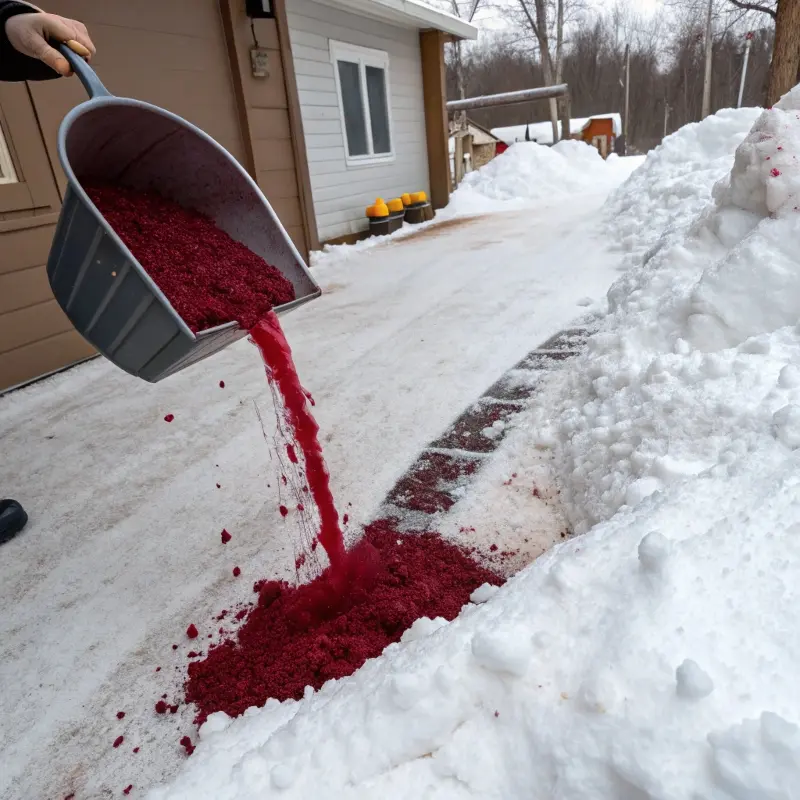
Quick Calcium Chloride Sock for Steps
Fill an old cotton tube sock with 2 cups calcium chloride pellets, tie a knot, and lay it across frozen steps. Pellets ooze brine through the fabric, melting icy treads in under 30 minutes without scattering loose salt that pets might lick. After use, hang the sock to dry and reuse all winter.
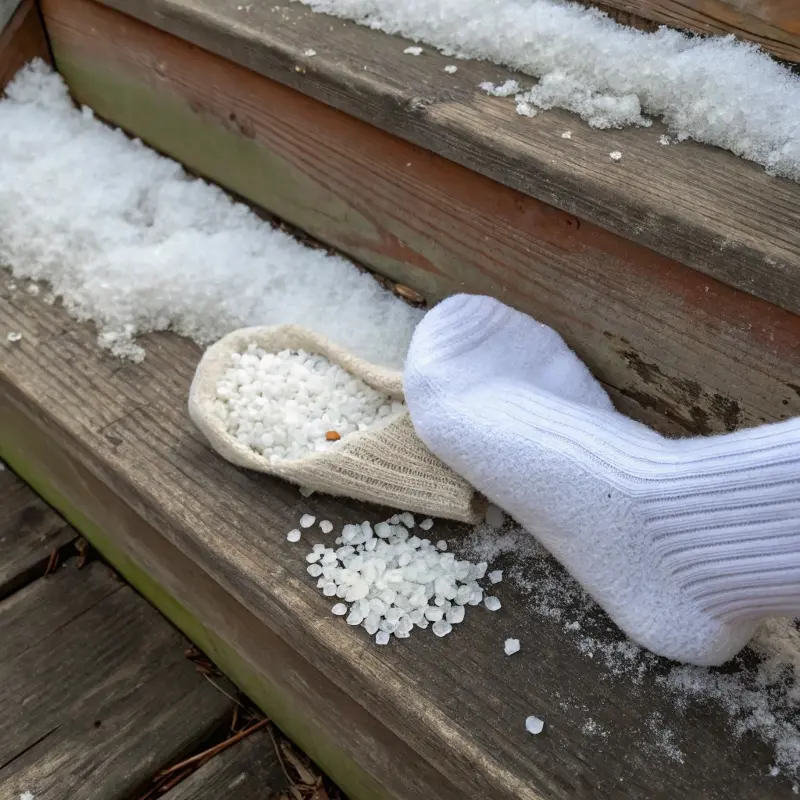
Lead Magnet Call-Out:
Download our printable Winter Walkway Checklist—a one-page guide to eco-safe de-icers, proper spread rates, and slip-proof footwear tips. Subscribe below and we’ll email it instantly.
With these kitchen-friendly formulas, you protect driveways, waterways, and your wallet—while saving gourmet pink Himalayan salt for flavorful dishes and electrolyte drinks where it truly shines.
Frequently Asked Questions
Can pink Himalayan salt melt ice?
Yes—but only about half as efficiently as coarse rock salt. The larger crystals dissolve slowly, releasing fewer ions, so melting stalls once temperatures dip below roughly 25 °F (-4 °C).
What type of salt is best for melting ice?
Calcium chloride pellets win. They deliver three ions per molecule, work down to -20 °F (-29 °C), and cost a fraction of gourmet pink salt, making them safer and cheaper for winter driveways.
At what temperature does Himalayan salt melt?
Pink Himalayan salt shares regular sodium chloride’s melting curve, functioning until brine hits its eutectic limit—about 15 °F (-9 °C). Below that, ice refreezes unless you switch to calcium chloride or beet-brine blends.
Why not use pink Himalayan salt?
Because each pound costs up to $5.50 and melts ice at only 35 % the rate of bulk rock salt. Trace iron can also stain concrete, so save pink crystals for electrolyte drinks or finishing dishes.
Conclusion — Save the Pink Crystals for Your Kitchen
Our live test proved it: pink Himalayan salt is a slow, pricey de-icer. Reserve those rosy crystals for flavorful recipes and hydration hacks like our salt-and-honey electrolyte drink. When sidewalks glaze over, reach for vinegar-salt spray, beet-brine, or budget-friendly calcium chloride. Your driveway, wallet, and waterways will thank you. Cheers to safer steps and smarter salt!
Print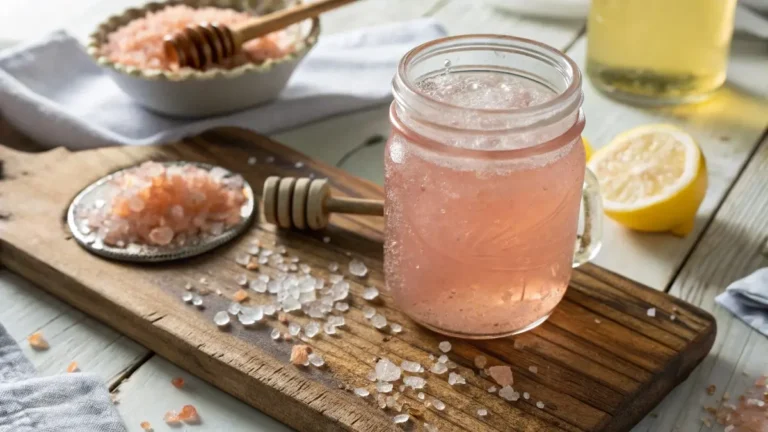
Will Pink Himalayan Salt Melt Ice? Myth-Busting Facts & Safe Winter Hacks
A 60-second electrolyte drink that blends pink Himalayan salt with raw honey for rapid, natural hydration without artificial dyes or excess sugar.
- Total Time: 1
- Yield: 1 drink
Ingredients
16 oz (475 ml) cold filtered water
⅛ tsp finely ground pink Himalayan salt
1 tsp raw honey
1 lemon wedge (optional)
Instructions
1. Pour water into a reusable bottle or jar.
2. Add pink Himalayan salt and raw honey.
3. Seal tightly and shake for 15 seconds until fully dissolved.
4. Squeeze lemon wedge if desired; sip within 20 minutes.
Notes
Why it works: sodium and glucose trigger fast water absorption via the sodium–glucose co-transport mechanism.
Timing: ideal after light exercise, gardening, or morning dehydration.
Swaps: maple syrup (vegan), monk-fruit drops (keto).
Storage: best fresh; if refrigerated, shake again before drinking.
- Prep Time: 1
- Category: Blog
- Method: No-Cook
- Cuisine: American
🔗 View this recipe on Medium for easy saving and sharing.

